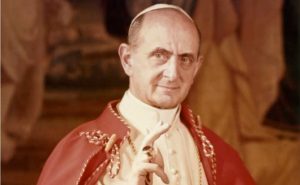 WASHINGTON, D.C., September 21, 2016 (LifeSiteNews) — More than 400 Catholic academics released a statement affirming the Catholic Church’s teaching on contraception and human sexuality in response to recent calls for the Church to change her teaching as the 50th anniversary of Humanae Vitae approaches. Opponents of Catholic teaching presented those calls Tuesday at the United Nations.
WASHINGTON, D.C., September 21, 2016 (LifeSiteNews) — More than 400 Catholic academics released a statement affirming the Catholic Church’s teaching on contraception and human sexuality in response to recent calls for the Church to change her teaching as the 50th anniversary of Humanae Vitae approaches. Opponents of Catholic teaching presented those calls Tuesday at the United Nations.
Humanae Vitae, Pope Paul VI’s landmark encyclical upholding the Catholic Church’s long-held teaching on human sexuality, was released in 1968. In preparation for its upcoming 50th anniversary, the Wijngaards Institute for Catholic Research released a statement titled On the Ethics of Using Contraceptives calling for the Church to accept the use of artificial contraception as moral.
It said the Church should issue an “official magisterial document … affirming that the use of non-abortifacient modern contraceptives for prophylactic purposes can be morally legitimate and even morally obligatory” and consider revising its teaching on in-vitro fertilization, homosexual activity, and masturbation.
To counter the so-called Wijngaards statement, the 400+ scholars released Affirmation of the Church’s Teaching on the Gift of Sexuality at a press conference at The Catholic University of America (CUA) yesterday. Numerous CUA faculty members, including President John H. Garvey, signed the statement.
Scholars: There is no Catholic argument for contraception
“The Wijngaards Statement seriously misrepresents the authentic position of the Catholic Church,” the scholars wrote. “Among the most erroneous claims made by the Wijngaards Statement is that neither Scripture nor natural law offers any support for the Church’s teaching that contraception is never compatible with God’s plan for sexuality and marriage. During the past half century, there has been an enormous amount of creative scholarly thinking around the Church’s teaching on contraception, thinking that includes profound reflections on the Theology of the Body, personalism, and natural law. In addition, there has been extensive research on and analysis of the negative impact of contraception on individuals, relationships, and culture.”
The Wijngaards Statement “offers nothing new to discussions about the morality of contraception and, in fact, repeats the arguments that the Church has rejected and that numerous scholars have engaged and refuted since 1968,” the document continued. One of the key inaccuracies of the Wijngaards Statement, the scholars assert, is its claim “that the argument against contraception in Humanae Vitae is based primarily on ‘biological laws.’ Humanae Vitae instead focuses, as it should, on the person’s relationship to God and to other persons.”
On the Ethics of Using Contraceptives “virtually ignored” Pope St. John Paul II’s Theology of the Body that defended Humanae Vitae, the scholars wrote.
Affirmation of the Church’s Teaching on the Gift of Sexuality outlined 11 points about the nature of God, the nature of marriage, and faith and reason that are the basis of the Church’s teaching that artificial contraception “is not in accord with God’s plan for sexuality and marriage.”
Humanae Vitae’s ‘prophetic’ warnings coming true
“Humanae Vitae was prophetic” when it predicted that contraception would lead to marital infidelity, a general lowering of morality, and abuse of women for sexual pleasure, the signers of the CUA statement agreed. “Abundant studies show that contraception, such as hormonal contraceptives and intrauterine devices, can cause serious health problems for women. The widespread use of contraception appears to have contributed greatly to the increase of sex outside of marriage, to an increase of unwed pregnancies, abortion, single parenthood, cohabitation, divorce, poverty, the exploitation of women, to declining marriage rates as well as to declining population growth in many parts of the world. There is even growing evidence that chemical contraceptives harm the environment.”
Pope Paul VI also predicted that contraception would begin to be imposed on people after its widespread acceptance. This prediction makes the Wijngaards Statement rather ironic given that it says the Church should label the use of artificial contraception “morally obligatory” in some cases.
Also in tune with Humanae Vitae’s predictions, the Wijngaards Statement recommended that the Church “seek the opinion of Christian theologians and experts in other relevant disciplines … on the other areas of Catholic sexual ethics which will likely be affected by a revision of the present teaching banning the use of contraceptives for family planning, namely the negative evaluation of masturbation, homosexual relationships, and in vitro fertilization.”
The CUA statement, however, calls for governments and international organizations to “make instruction in Fertility Awareness Based Methods (FABMs) of family planning a priority” because “FABMs are based on solid scientific understanding of a woman’s fertility cycle, are easily learned by women in developing countries, are virtually without cost, and promote respect for women.”
“International organizations and governments should respect the values and beliefs of families and cultures that see children as a gift, and, therefore, should not impose — on individuals, families, or cultures — practices antithetical to their values and beliefs about children and family planning,” the CUA statement said.
Notable signers of Affirmation of the Church’s Teaching on the Gift of Sexuality include:
Janet E. Smith, Ph.D, Father Michael J. McGivney Chair of Life Ethics, Sacred Heart Major Seminary; Author, Humanae Vitae: A Generation Later
John S. Grabowski, Ph.D, Associate Professor and Director of Moral Theology/Ethics, School of Theology & Religious Studies, The Catholic University of America, Board Member, The Academy of Catholic Theology; Author, Sex and Virtue: An Introduction to Sexual Ethics
Mary Rice Hasson, JD, Director, Catholic Women’s Forum, Ethics and Public Policy Center; Editor, Catholic Women Reflect on Feminism, Complementarity, and the Church
Helen M. Alvare, JD, Professor of Law, Scalia Law School at George Mason University; Editor: Breaking Through: Catholic Women Speak for Themselves
John H. Garvey, JD, President, The Catholic University of America
Richard J. Fehring, Ph.D, RN, FAAN, Professor Emeritus and Director, Marquette University’s Institute for Natural Family Planning
Angela Franks, Ph.D, Director of Theology Programs for the Theological Institute for the New Evangelization at St. John’s seminary in Massachusetts
John M. Haas, Ph.D, STL., MDiv, K.M. President, The National Catholic Bioethics Center
Mary Healy, PhD, Sacred Heart Major Seminary
Rev. Thomas Petri, O.P., STD, Vice President and Academic Dean, Pontifical Faculty of the Immaculate Conception at the Dominican House of Studies
Michael Waldstein, Max Seckler Professor of Theology, Ave Maria University, Florida, Translator of Man and Woman He Created Them: A Theology of the Body and author of Glory of the Logos in the Flesh: John Paul II’s Theology of the Body (forthcoming)
George Weigel, Distinguished Senior Fellow, Ethics and Public Policy Center, Washington, D.C.; author of the two-volume biography of Pope St. John Paul II, Witness to Hope and The End and the Beginning
The other signers included professors and intellectuals from around the world and Dominican and Jesuit religious.
Dominican Father Thomas Petri, one of the main signers of the CUA statement, noted that CUA’s sponsorship of the statement shows it has come a long way since the 1960s, when its theology department was known for heterodoxy and dissent from Catholic doctrine.
Five Jesuits and two Dominicans were signatories of the Wijngaards Statement, along with 140 others, some of whom are not Catholic.
The full Affirmation and list of signatories is available here.
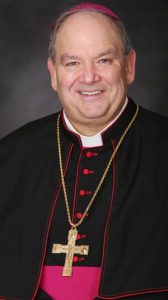 Strange things happen in election years. That was clear to me last Monday morning as I opened the newspaper to a full-page ad from an organization called “Catholics for Choice” referring to “Abortion in Good Faith” and misrepresenting Catholic social teaching by claiming that “public funding for abortion is a Catholic social justice value.” This ad, with slight regional variations, appeared in newspapers across the country, and represented the latest in a series of public relations efforts by this organization to promote a pro-abortion agenda by attempting to counter the Church’s consistent and convincing proclamation of the Gospel of life.
Strange things happen in election years. That was clear to me last Monday morning as I opened the newspaper to a full-page ad from an organization called “Catholics for Choice” referring to “Abortion in Good Faith” and misrepresenting Catholic social teaching by claiming that “public funding for abortion is a Catholic social justice value.” This ad, with slight regional variations, appeared in newspapers across the country, and represented the latest in a series of public relations efforts by this organization to promote a pro-abortion agenda by attempting to counter the Church’s consistent and convincing proclamation of the Gospel of life. WASHINGTON, D.C., September 21, 2016 (LifeSiteNews) — More than 400 Catholic academics released a statement affirming the Catholic Church’s teaching on contraception and human sexuality in response to recent calls for the Church to change her teaching as the 50th anniversary of Humanae Vitae approaches. Opponents of Catholic teaching presented those calls Tuesday at the United Nations.
WASHINGTON, D.C., September 21, 2016 (LifeSiteNews) — More than 400 Catholic academics released a statement affirming the Catholic Church’s teaching on contraception and human sexuality in response to recent calls for the Church to change her teaching as the 50th anniversary of Humanae Vitae approaches. Opponents of Catholic teaching presented those calls Tuesday at the United Nations.
 It is fitting that this day falls adjacent to September 11, the anniversary of the terrorist attacks in New York and Arlington, Virginia. Though the number of lives taken by abortion is much larger than that taken on that terrible day fifteen years ago, both acts of mass murder rely on the same evil, the denial of the humanity of others.
It is fitting that this day falls adjacent to September 11, the anniversary of the terrorist attacks in New York and Arlington, Virginia. Though the number of lives taken by abortion is much larger than that taken on that terrible day fifteen years ago, both acts of mass murder rely on the same evil, the denial of the humanity of others.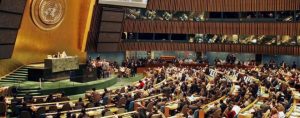 In September 2015 the United Nations General Assembly adopted a series of goals and targets in order to eradicate poverty, eliminate inequality, and subdue climate change by 2030. These Sustainable Development Goals (SDGs), comprising 17 goals, 169 targets, and 230 indicators (to measure progress) replaced the eight Millennium Development Goals that had guided UN development policy thinking over the previous 15 years. Secretary-General Ban Ki-moon characterized the SDGs as heralding “an historic turning point for our world”; they will probably be the hallmark of his legacy as he ends his decade-long reign at the helm of the UN in December.
In September 2015 the United Nations General Assembly adopted a series of goals and targets in order to eradicate poverty, eliminate inequality, and subdue climate change by 2030. These Sustainable Development Goals (SDGs), comprising 17 goals, 169 targets, and 230 indicators (to measure progress) replaced the eight Millennium Development Goals that had guided UN development policy thinking over the previous 15 years. Secretary-General Ban Ki-moon characterized the SDGs as heralding “an historic turning point for our world”; they will probably be the hallmark of his legacy as he ends his decade-long reign at the helm of the UN in December.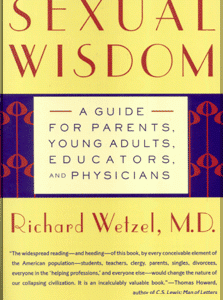
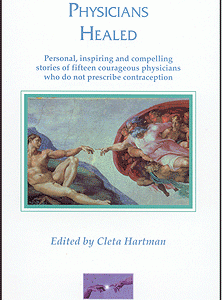
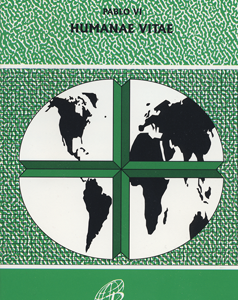
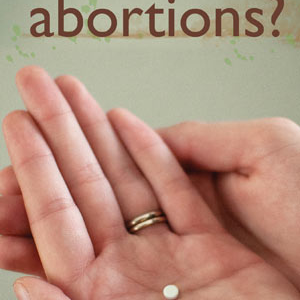
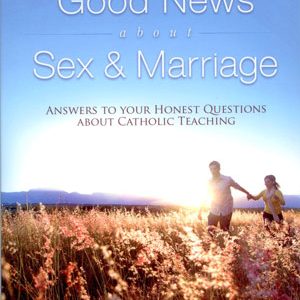
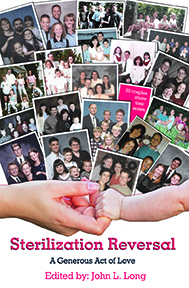
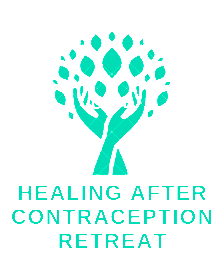
The life-saving amendment
By Chris Smith – – Thursday, September 29, 2016
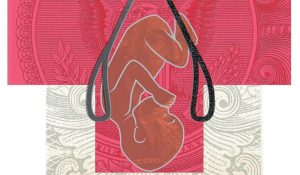
ANALYSIS/OPINION:
Today marks 40 years since the life-saving Hyde Amendment was first enacted. This annual appropriations amendment stops taxpayer dollars from being used to fund most abortions and abortion coverage through government programs like Medicaid.
Thanks to new analysis by the Charlotte Lozier Institute we now know that as many as two million children — some much older now — are alive today because of the Hyde amendment.
Prior to enactment of Hyde, the Medicaid program paid for about 300,000 abortions annually. Research, including by the pro-abortion Guttmacher Institute, has long shown that stopping taxpayer-funded abortion reduces the abortion rate. In an analysis released just this week, the Charlotte Lozier Institute estimates that the Hyde amendment saves as many as 60,000 lives each year.
I remember the day several years ago when my friend and author of the amendment, Henry Hyde of Illinois, first learned that about one million children were alive because of his amendment. He was overcome with joy knowing that a million mothers were spared the agony of post abortion pain, a million children were alive and well, growing up, going to school, playing sports, dating, marrying and having kids of their own. Today that number is estimated at two million — all because abortion subsidies have been prohibited by this law. Since the first bitter and protracted battles over this policy, the Hyde amendment has generally, if begrudgingly, been accepted as the status quo. President Bill Clinton — who supported partial-birth abortion — and President Barack Obama — who pledged to veto a bill protecting children born alive after abortion, both consistently signed the Hyde amendment into law.
Yet Hillary Clinton represents a new era of pro-abortion extremism.
Not only does she fall in party line with her opposition to the Pain-Capable Unborn Child Protection Act, the ban on sex selection abortion, and the Born Alive Abortion Survivors Protection Act, she will have an abortion litmus-test for every judge and justice. And in a new assault on innocent human life, she has vowed to decimate the Hyde Amendment and fund abortion on demand using taxpayer dollars.
In 1980 the Hyde Amendment narrowly overcame a constitutional challenge in a 5-4 Supreme Court decision. If Hillary Clinton appoints just one justice, the Hyde amendment will be nullified.
Hillary Clinton is outside of the mainstream. Today, more Americans support the sanctity of life and oppose taxpayer funding for abortions than ever.
America has an ever-growing majority that believes our government should not fund abortion. A July 2016 Marist poll found that nearly two-thirds of Americans oppose taxpayer funding for abortion — including 45 percent of those who identify as “pro-choice.”
The Hyde Amendment is not extreme. Hillary Clinton is.
Hillary Clinton is so extreme and outside the mainstream that when MSNBC’s Chuck Todd asked her in an April 3 interview: “When, and if, does an unborn child have constitutional rights?” Hillary Clinton fired back: “unborn persons don’t have constitutional rights .” Mrs. Clinton acknowledges that unborn children are persons, but denies them their right to life and wants taxpayers to pay for their destruction.
When Hillary Clinton was awarded the Margaret Sanger award by Planned Parenthood in 2009, she said she was “in awe” of Margaret Sanger, the infamous founder of Planned Parenthood. Shockingly, its American affiliate alone claims responsibility for the death of over seven million babies.
In her 2009 speech Mrs. Clinton also said she admired Sanger for her vision and that Sanger’s work here in the United States and across the globe was not done. “Not done” means more abortions, paid for by the taxpayer, and an end to conscience rights for those who don’t agree.
If we lose the Hyde Amendment our country will be carrying out Sanger’s eugenic legacy — incentivizing the destruction of the poor and vulnerable by paying for their death.
There are nearly 60 million Americans missing from 43 years of legal abortion. That’s 60 million lives with potential that have been snuffed out by state-sanctioned killing.
Hillary Clinton poses an existential threat to the welfare and well-being of unborn children and their mothers in the United States and around the world. Rather than expand the culture of death and shred the Hyde amendment — as Hillary Clinton promises — women and men of conscience have a duty to protect the weakest and most vulnerable from the violence of abortion.
Chris Smith is an 18-term Republican congressman from New Jersey.
Posted in News & Commentary | No Comments »